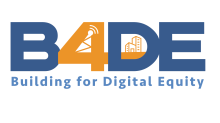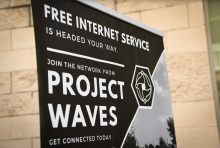Coalition Building Success Takes Center Screen On B4DE Livestream
As Digital Inclusion Week 2024 swings into action, frontline digital inclusion practitioners from across the nation will come together for a timely Building for Digital Equity (#B4DE) livestream event today that focuses on “Coalition Building for Success.”
The popular (and free) virtual gathering – co-hosted by Institute for Local Self-Reliance (ILSR) Community Broadband Networks Initiative and the National Digital Inclusion Alliance (NDIA) – will go live today from 3 to 4:15 PM ET.

For Digital equity advocates or interested guests who have yet register for the event, there is still time to register here.
The third #B4DE of the year will delve into how coalitions are finding success in pushing the digital equity movement forward as Digital Equity Act grant programs are being established.
The keynote speaker for today’s livestream will be Georgia Savage, Deputy Director of #OaklandUndivided, who helped lead the way in securing $38.5 million in grant funding that will expand broadband infrastructure and distribute Internet-connected devices to thousands of low-income households across East and West Oakland, California.





